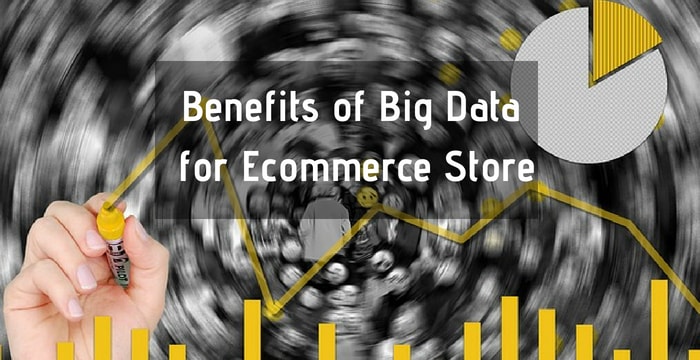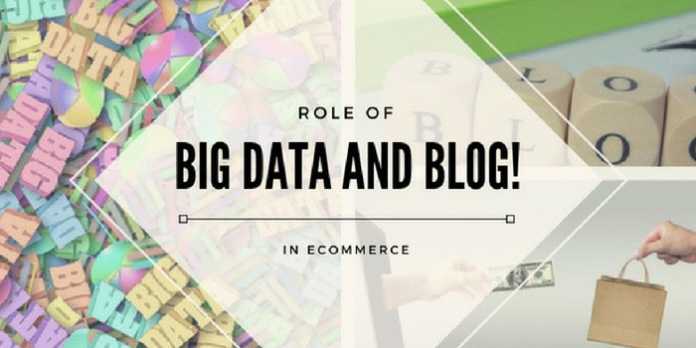Everyone, from businesses large and small are talking about big data and how it impacts marketing, commerce, and the way we all do business. It’s true. While big data at its simplest definition is just large data sets that take a great deal of computing power to analyze, the heart of the subject is that we know more about our customers and how to market them than ever before.
Maybe you are new to the ecommerce world, just purchasing a domain name and building a site. Maybe you are experienced and want to earn a greater return on your marketing investment. Big data can help. How does it all relate though? What does big data have to do with blogging, and how do all of them interact to help you market an ecommerce store? Here is a simplified guide.
Big Data and Where it Comes From
There is a principle that we often take advantage of things without knowing where they come from called commodification. However, it is important in the case of big data to understand where it comes from so that you understand how you can use it, especially in the light of the newest GPDR regulations enacted in May of this year.
Big data is created by smart devices, social media, census data, web browsing data collected by Google and other search engines, and more. Essentially this is data shared by customers, usually for a specific purpose. Whether that is to subscribe to a newsletter, check out with a credit card, or simply get shown suggested pages and posts on social media, the key is that the data they shared should not be used for any other purpose than they have given permission for it to be used for.
This is why terms and conditions are such long legal documents, and privacy policies are updated regularly. The data a customer shares must be reasonably protected too. Personal data in this case is defined as anything that can be used to identify the person, like first and last name, email address, phone number, date of birth, etc.
Often, big data is anonymized. This means that the identifying information is removed, but things like sex, age, race, and more still remain. This allows you to see trends in groups of people who like organic dog food, for instance. You might be able to surmise where they buy, in person or online, and the brands they prefer.
The gathering of big data can be done in a number of ways. Although it comes from social media and other places, it can be gathered by companies, even your own, through social listening and analytics. You can even anonymize your own data. You can also obtain industry data, social data, and other information through analytics and other companies as well.
However, what role does your blog play in big data? Here is the simple version.
 Your Blog and It’s Role in eCommerce
Your Blog and It’s Role in eCommerce
Just like the rest of your website, your blog is a part of your analytics, and hopefully you already have Google analytics installed. There are other analytics programs as well, and programs like Shopify and WordPress have their own in addition to Google. All of them measure things differently, and in some cases will come with different results.
The thing is, the analytics of your blog can tell you a lot about what is working and what isn’t when it comes to your inbound marketing efforts. Are readers more interested in long form or short form content? Are they responding to your call to action and clicking through your links? What links and words work better than others? What about titles and page types?
Your blog (and the rest of your website) is your location to grab as much information as possible about your customers and web visitors. This is valuable because it lets you know not only if your marketing efforts are on target and effective, but what you can do to change them and make them more so.
This is localized data, data about you not just the industry in general. The same is true for your social listening. What blog posts and social media posts get liked and shared? What ones do not do as well? What social networks work best for your blog, Facebook, Twitter, or Instagram?
This will help you determine not only where to put your efforts, but areas where you can improve and try to appeal to new audiences. While your blog might seem like it produces little data compared to larger overall big data, it can be a vital part of your ecommerce success.
Your Store and Big Data

Finally, your ecommerce store not only benefits from big data, it also generates data of its own. From browsing behavior to cart abandonment, following through on landing pages and calls to action or high bounce rates, your website, your store, tells you what you need to do to be more successful.
Where is that information coming from? The same place all big data essentially comes from: the customer. Your customer is telling you by what they do what they like and do not like about your site, and even without asking them specifically, you can tell through analytics and make changes.
But that is the beauty of big data. You can also ask your customers directly through surveys and other forms of feedback. Even anonymous surveys will tell you how your site is doing and what works for your customer base and what doesn’t. This adds more information to your own dataset, something just as valuable or more so than the one you get from Facebook or Twitter analytics.
Big data is a friend of marketers everywhere, and especially of those in the ecommerce business who have something to sell. Your site, your blog, and every interaction and touchpoint you have with a customer tells you something about them. Be sure that you are listening to what they are telling you.




























